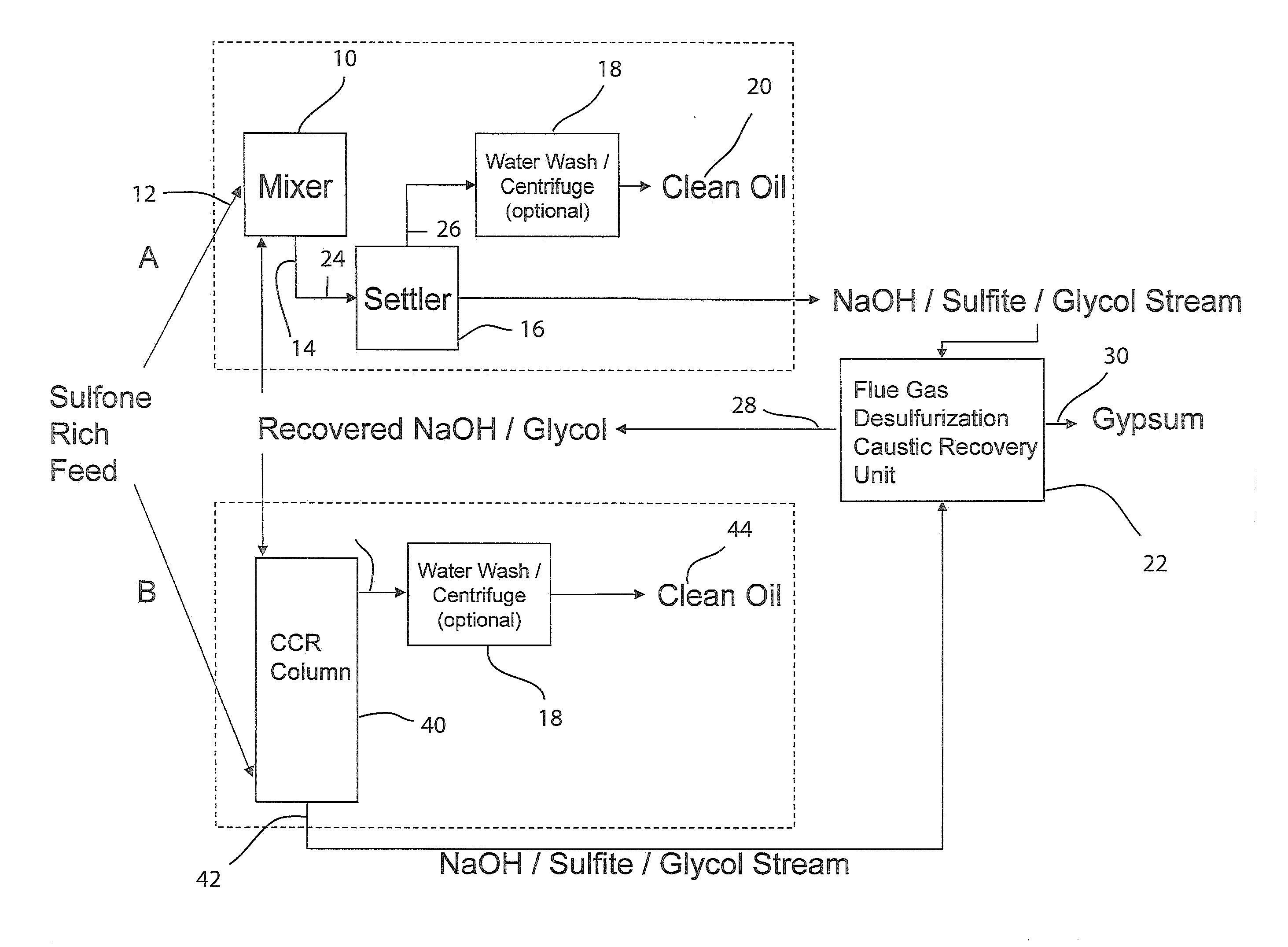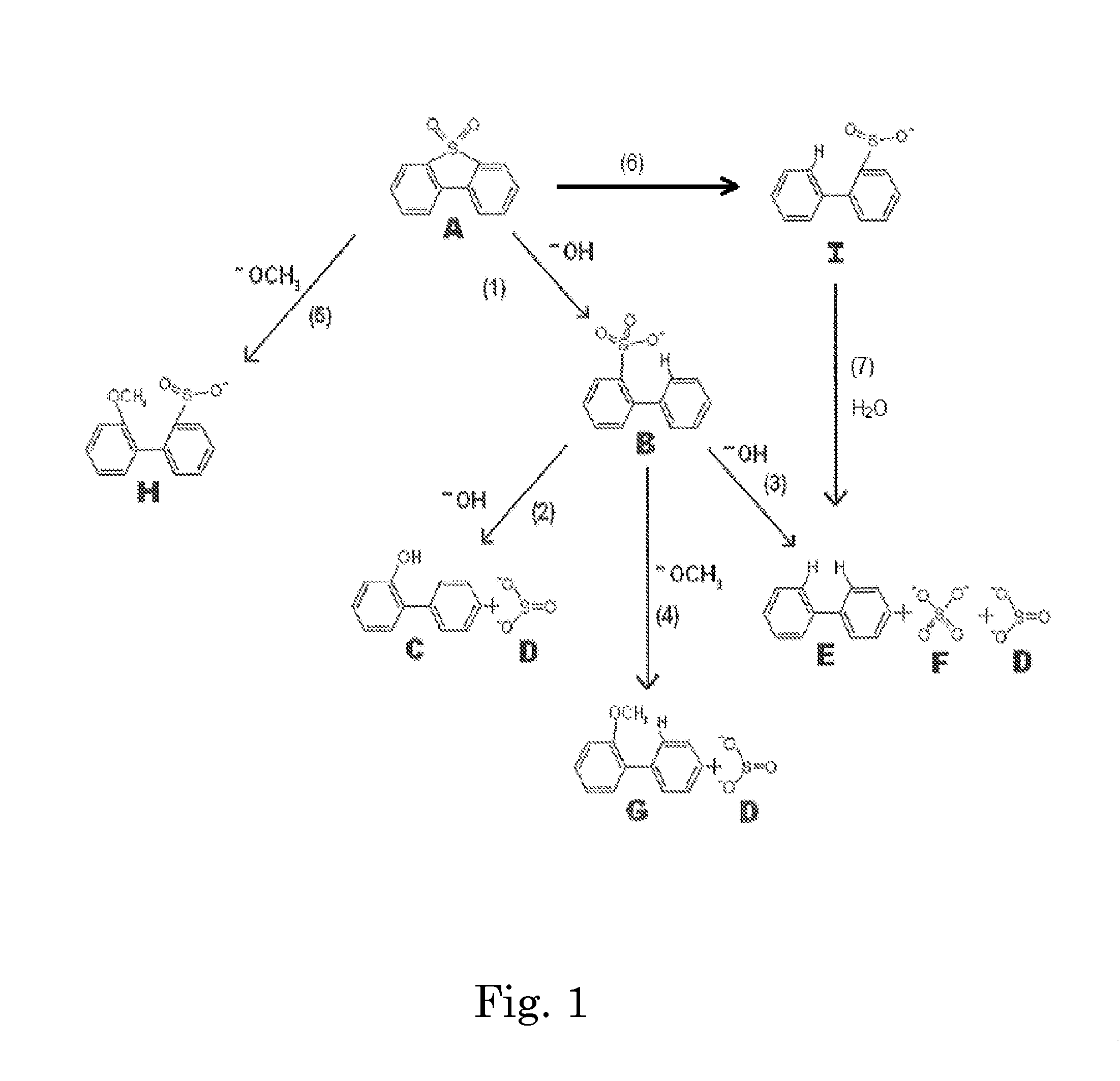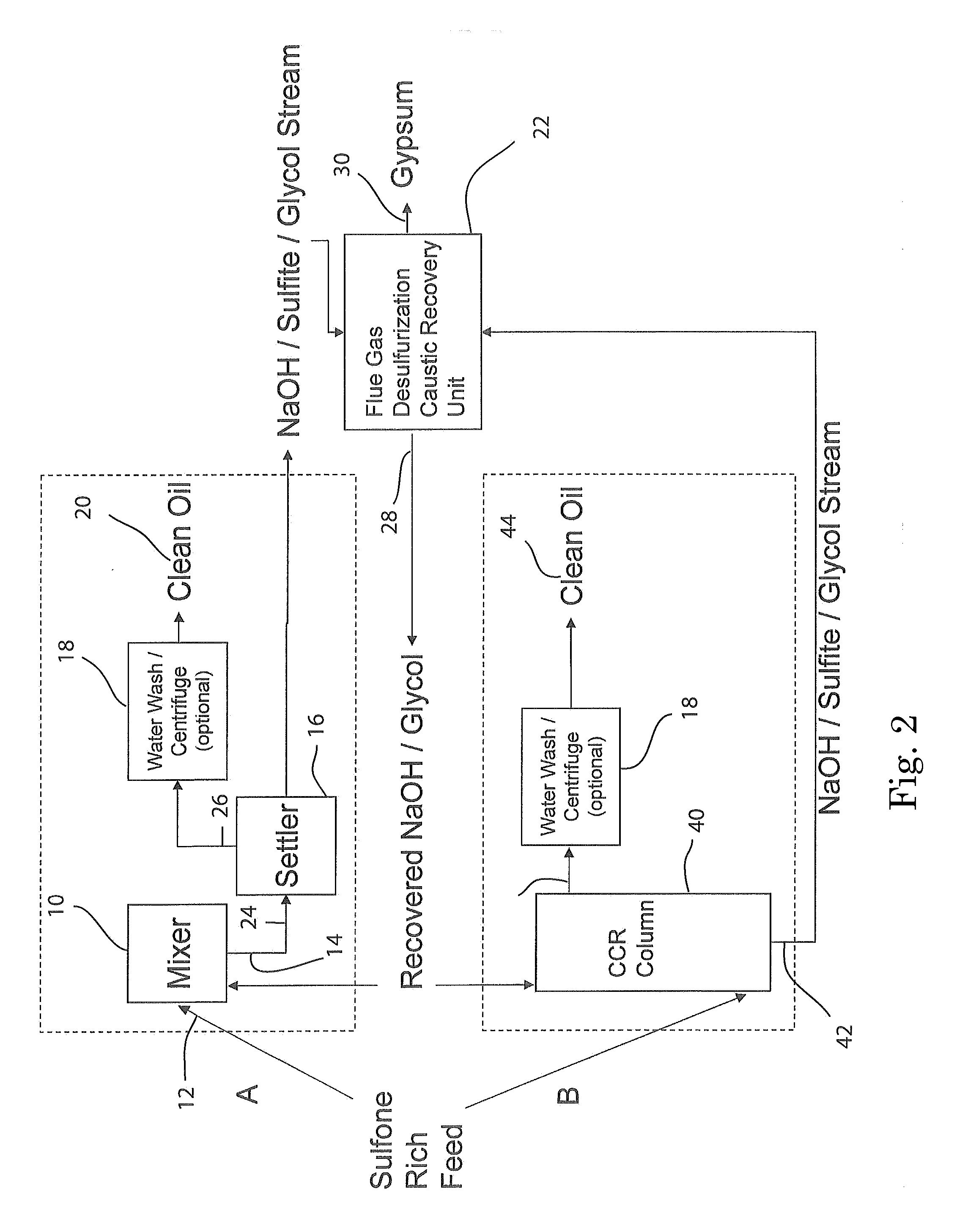Reaction system, methods and products therefrom
a technology of reaction system and hydrocarbon contaminants, which is applied in the direction of physical/chemical process catalysts, separation processes, and refining with aqueous alkaline solutions, can solve the problems of serious atmospheric pollution problems, negatively affecting the downstream process of crude oil refinery processing, and affecting the processing of crude oil fractions. , to achieve the effect of reducing the total acid number, increasing the api gravity, and reducing the content of heteroatoms
- Summary
- Abstract
- Description
- Claims
- Application Information
AI Technical Summary
Benefits of technology
Problems solved by technology
Method used
Image
Examples
example 1
[0099]A stainless steel (type 316) Parr-type pressure reactor with a volume of 1000 mL was charged with 29 grams of a 1:1 by moles mixture of sodium hydroxide and potassium hydroxide, 11 grams of dibenzothiophene sulfone, and 202 grams of 1,2,3,4-tetrahydronaphthalene. The vessel was heated under rapid stirring to 300° C. The reactor was held at this temperature for 60 minutes, during which the pressure rose to a maximum of 150 psi, then removed from heat and allowed to cool without stirring. 200 grams of liquid were decanted from the reactor, and 41 grams of solids remained. The tetralin layer was analyzed by HPLC. The solids were acidified by adding 125 mL of 5.0M HCl. Vigorous bubbling of released sulfur dioxide from the neutralization of sulfites occurred, confirmed by a sulfur dioxide detector. Dichloromethane was added to extract organics, which was then evaporated, leaving a light brown oil, which was analyzed by HPLC. It was found that >99% of the dibenzothiophene sulfone wa...
examples 2-4
[0100]The experiment of EXAMPLE 1 was repeated three times, except that the temperature was 275° C. The average results were: 94.5% conversion of dibenzothiophene sulfone, to the following products: ortho-phenylphenol (58%), biphenyl (9%), and dibenzofuran (5%). No dibenzothiophene was detected (<1%). The total sulfur-free yield was 73%. The average yield of all organics was 97%.
example 5
[0101]The experiment of EXAMPLE 2 was repeated except that 20 grams of methanol was added to the reactor with the other reactants. The pressure rose to 350 psi during the reaction. It was found that 92% of the dibenzothiophene sulfone had been converted to the following products: 2-methoxybiphenyl (40%), ortho-phenylphenol (30%), biphenyl (6%), and dibenzofuran (3%). No dibenzothiophene was detected (<1%). The total sulfur-free yield was 79%, with 49% being non-ionizable products. In addition, sulfur dioxide was detected after the run when the pressure was vented, before any acid had been added. The yield of all organics was 97%, not including methanol, which was washed away in the acid workup.
PUM
| Property | Measurement | Unit |
|---|---|---|
| temperature | aaaaa | aaaaa |
| electric voltage | aaaaa | aaaaa |
| temperatures | aaaaa | aaaaa |
Abstract
Description
Claims
Application Information
 Login to View More
Login to View More - R&D
- Intellectual Property
- Life Sciences
- Materials
- Tech Scout
- Unparalleled Data Quality
- Higher Quality Content
- 60% Fewer Hallucinations
Browse by: Latest US Patents, China's latest patents, Technical Efficacy Thesaurus, Application Domain, Technology Topic, Popular Technical Reports.
© 2025 PatSnap. All rights reserved.Legal|Privacy policy|Modern Slavery Act Transparency Statement|Sitemap|About US| Contact US: help@patsnap.com



